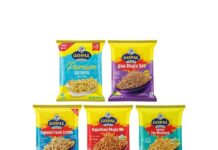
We have examined in the previous articles, the challenges faced during powder filling and the types of powders. In this article, we will focus on selecting the right equipment that suits your requirements and the powder.
Objectives and factors to be considered
Some of the factors to be considered are:
- Volume in tons per shift per SKU.
- Fill accuracy desired.
- Specifying powder characteristics, especially bulk density and changes expected. The lowest bulk density must be specified to determine package volume or size. Dust, moisture content, and product breakage if it is a concern must be clearly spelt out.
- Packaging material and pack style. Equipment must be suitable.
- Feeding system and feed rate, the equipment must be integrated.
- Secondary packaging and its integration.
- Data acquisition and integration with your systems.
Developing a comprehensive RFQ for powder-filling equipment

When crafting a Request for Quotation (RFQ) for powder-filling equipment, it’s essential to focus on the critical selection of the filling system. This decision hinges on various factors that collectively contribute to the efficiency, cost-effectiveness, and quality of the powder-filling process. Let’s break down the key considerations:
- Clarifying equipment requirements
– Articulate specific powder filling needs, considering factors such as the type of powder, its properties, and unique characteristics impacting equipment selection.
– Clearly define the desired production volume, speed, and accuracy requirements to guide suppliers in proposing suitable solutions.
- Establishing technical specifications
Provide detailed technical specifications for the powder-filling equipment, including size ranges, dosing mechanisms, and any specific features required for the intended application.
Specify industry or regulatory standards that the equipment must adhere to for compliance and quality assurance.
- Ensuring compatibility
– Emphasize compatibility with the existing production line or any other machinery in use.
– Address integration requirements and potential challenges to ensure seamless alignment within the manufacturing environment.
- Quality and compliance
– Clearly outline quality standards expected from the equipment, including materials of construction and finish.
– Highlight any regulatory compliance requirements, such as Good Manufacturing Practices (GMP), ensuring the selected equipment meets industry standards.
- Budgetary constraints
– Provide a realistic budget range, considering initial costs, ongoing maintenance expenses, and any potential hidden costs.
– Encourage suppliers to provide detailed pricing information to facilitate a comprehensive cost-benefit analysis.
- Delivery and implementation timeline
– Specify the desired delivery timeline for the equipment.
– Include information on installation, training, and any other services required for seamless implementation.
- Packaging volume, product cost, and package size
– Consider the expected packaging volume over a defined period and choose a filling system that meets production demands.
– Evaluate the overall cost-effectiveness of the filling system, balancing initial investment, operational costs, and potential long-term savings.
– Define the range of package sizes the equipment must accommodate, ensuring versatility without significant downtime during changeovers.
- Product dust and breakage avoidance
– Analyze the nature of the powder to identify dustiness and the potential for breakage.
– Select a filling system with features designed to minimize dust generation and reduce the risk of product breakage.
- Hygiene and cleanability
– Consider the ease of cleaning and sanitation, especially for processes involving frequent changeovers.
– Opt for equipment with features facilitating efficient cleaning and minimizing cross-contamination risks.
- Flexibility and Adaptability
– Choose a filling system adaptable to different packaging materials and formats.
– Ensure compatibility with various packaging types to enhance versatility in the production line. (see also point 7. above)
– Establish clear criteria for evaluating vendor proposals, considering technical capability, reputation, after-sales support, and pricing.
– Encourage suppliers to provide references and case studies demonstrating successful implementations in similar industries.
Evaluation and decision-making
Please establish clear criteria for evaluating vendor proposals. While selecting a vendor partner, you must review the following –
Total cost of ownership – the cost of ownership will determine the real payback on your investment and the efficiency of your operations. Some of the factors to be considered are:
- Fill accuracy – overfill or give away is the number one cost of ownership. When we evaluated the packaging line at a leading MNC, the cost of overfill was over Rs 10 million per annum. This naturally depends on your product cost, but the cost is significant. Therefore, fill accuracy is the most important criterion for equipment selection. The type of filler should depend not only on your product but also on the fill accuracy it can deliver.
- OEE – while equipment speed is important what is more important is the equipment OEE. This captures stoppage time, change over time, setting up time. Higher OEE means higher efficiency.
- Wastages – important to calculate wastages, especially while setting up and due to rejections.
- Power consumption and space required – important to ensure that your new line is optimized.
- Projected spares consumption, agree on cost of spares and consumable spares for two years.
- MTBF mean time between failures is an important metric. This will tell you how long your line would be unproductive.
Application experience and references
This is a very important criterion – the most crucial. Your vendor will be your partner in keeping the line running efficiently. Therefore, he must have a proven track record.
Vendor visits and trials – please include a vendor visit to inspect his facilities. Conduct a trial to ensure that the claimed performance is achieved. Visit the sites of customers to get firsthand feedback.
Data acquisition – this is a must going forward. You can capture data on output, stoppages with time and reason, giveaway, cost of giveaway, and OEE.
Packaging material compatibility – machine performance of your packaging materials is very important. This is specifically important when line speeds are being increased or when sustainability goals are being pursued.
Conclusion
Equipment selection must focus on your needs like volume, cost of ownership, product characteristics, and budget. It must also focus on the vendor, his equipment, technology, and experience packing your product. Claims must be verified through trial and site visits.
Lastly and most importantly, the equipment must deliver value. Value could be measured on three metrics. Speed, accuracy, and price.
If your product cost is low, then speed and price become more important. If the product cost is high, then accuracy and cost become important. Of course, you may want all three but focusing on two will give you commercially attractive options.
IndiFoodBev — authentic, impactful and influential
An English-language food and beverage processing and packaging industry B2B platform in print and web, IndiFoodBev is in its third year of publication. It is said that the Indian food and beverage industries represent approximately US$ 900 billion in revenues which implies more than 20% of the country’s GDP. Eliminating the wastage on the farmside can help to deliver more protein to a higher number of the population apart from generating sizable exports. The savings in soil, seeds, water, fertilizer, energy and ultimately food and nutrition could be the most immense contribution that country is poised to make to the moderation of climate change.
To improve your marketing and grow sales to the food and beverage processing and packaging industry, talk to us. Our research and consulting company IppStar [www.ippstar.org] can assess your potential and addressable markets in light of the competition. We can discuss marketing, communication, and sales strategies for market entry and growth.
Suppliers and service providers with a strategy and budget for targeted marketing can discuss using our hybrid print, web, video, and social media channels to create brand recognition linked to market relevance. Our technical writers are ready to meet you and your customers for content.
The second largest producer of fruit and vegetables in the world is continuously expanding processing capacities and delivery systems with appropriate innovative technologies. We cover product and consumer trends, nutrition, processing, research, equipment and packaging from farm to thali. Get our 2025 media kit and recalibrate your role in this dynamic market. Enhance your visibility and relevance to existing markets and turn potential customers into conversations. Ask for a sample copy of our bi-monthly in print or our weekly IndiFoodBev eZine each Wednesday.
For editorial info@ippgroup.in — for advertisement ads1@ippgroup.in and for subscriptions subscription@ippgroup.in
Naresh Khanna – 10 February 2025
Subscribe Now










